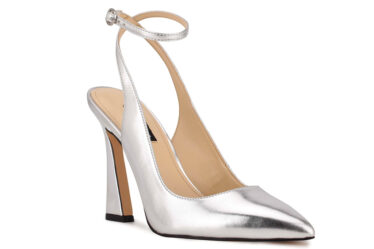
Gap Inc. is aiming for a piece of the runway.
The San Francisco-based company, which owns Old Navy, Banana Republic, Athleta and its namesake brand Gap, named celebrity fashion designer Zac Posen as creative director of Gap Inc. and chief creative officer of Old Navy on Monday in a move that suggests the company is looking to regain its status as a fashion leader.
Gap Inc., which has seen comp sales decline every quarter this fiscal year, has been long overdue for a style makeover and a bit of a luxury touch. But the company should be wary of leaning too far into the world of high-end preferences or it will alienate the everyday consumers who have helped make it an American icon.
Netting Posen as a creative director is an impressive victory for the ailing brand. He is one of just a few fashion figures who has become a household name thanks to his work as a judge on Bravo TV’s Project Runway. And his contributions to fashion have been revolutionary for dressing plus-size celebrities, including Ashley Graham and Oprah Winfrey in stunning opulent gowns, along with sample size stars. It was a stark pivot from the sensibilities of legacy luxury brands, which have inspired the fashion world’s definition of beauty as thin (and often white). Posen was ahead of the curve in designing lavish pieces for larger bodies that even thin people wanted to buy. His work helped pave the way for the body-inclusivity movement.
Gap Inc. could use this kind of cultural foresight. It wasn’t too long ago that the company was one of the most forward-thinking retailers in the US. It rose to become an American staple for high-quality casual apparel in the 1990s under former chief executive Mickey Drexler. Its classy yet upbeat advertising reflected the middle-class optimism of the time, and its brand became almost interchangeable with American fashion. But since Drexler’s abrupt exit in 2002, the company has taken a tumble.
It became burdened by its sprawling mall-based store fleet and a series of product missteps, including embarrassing grammatical errors and an uninspiring ad campaign to “dress normal.” Old Navy, the company’s historically successful affordable line, has also struggled recently to stay relevant. A poorly executed size-inclusivity program, which launched in 2021 and overestimated the demand for larger sizes, contributed to a 19 percent drop in Old Navy sales within the first nine months of its launch. And the brand has been slow to regain its momentum. Old Navy’s net sales have fallen by mid- to low-single digits year-over-year for the last three quarters.
Gap Inc.’s bet on bringing a touch of luxury to its affordable clothing line is a strong one. The company is competing with new and revamped players including Inditex SA’s Zara and Abercrombie & Fitch Co. But before it dives head first into high fashion, it must be mindful not to repeat its recent mistakes in trying to force a mainstream brand onto the runway as it did with Banana Republic.
Its collaboration with fashion designer Peter Do was out of touch with Banana Republic’s consumers since its launch. The collection debuted during Paris Fashion Week during the fall, far from the sights of Banana Republic’s core American shoppers. And the pieces themselves are far too high fashion for day-to-day work outfits. For instance, its $640 khaki utility blazer shows little actual utility in having a large cutout in the back. One of Do’s more conservative designs, a pleated trench skirt, originally had a $300 price tag. Maybe luxury fashionistas would shell out hundreds of dollars for one of Do’s pieces but the style and price point don’t align with Banana Republic’s more premium shoppers. It’s no wonder the collection is now selling online at a discount.
Despite the initial excitement, Banana Republic’s pivot toward luxury fashion was a bust. But with Posen, Gap has a chance to take back its status as an affordable and classic American fashion house. He brings with him a lot of work and life experience. Not only has he demonstrated success in dressing celebrities in some of fashion’s most memorable looks but he’s no stranger to the ups and downs of the retail world. His own business closed shop in 2019 after a nearly 20-year run because it failed to find new investors or a buyer to keep it afloat. However with Gap, Posen has the structure of an existing brand that is part of a broader portfolio. That gives him some cover to experiment without having to build an entire business from scratch.
Already analysts seem optimistic. Bloomberg Intelligence’s Mary Ross Gilbert wrote in a note on Monday that Old Navy sales “could take off in 2025″ with Posen taking over design and merchandising alongside Old Navy’s president and CEO Horacio Barbeito, who previously led Walmart Inc.’s Canada business. Gap Inc.’s new CEO Richard Dickson, who is credited with revitalising Mattel Inc.’s Barbie, has also led improvements in inventory and assortment at Old Navy and Gap that could help the company outperform its fourth-quarter consensus estimates, Gilbert wrote in November.
All signs are pointing up for Gap and Old Navy. But it should be sure to keep its pulse on the everyday American shopper rather than the out-of-touch excesses of the Paris runway.
By Leticia Miranda



